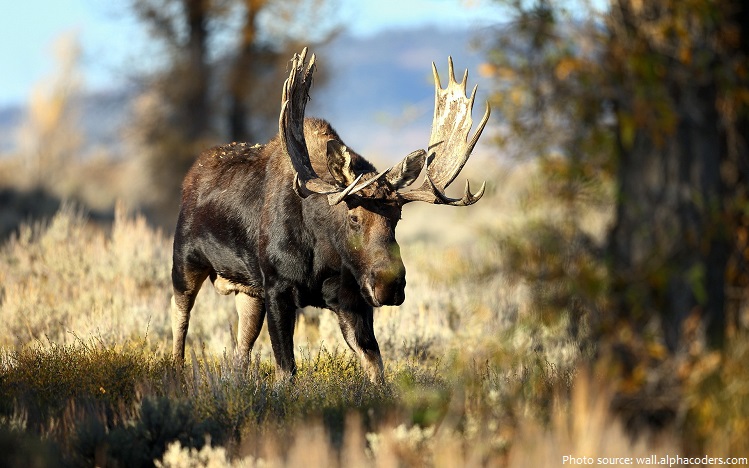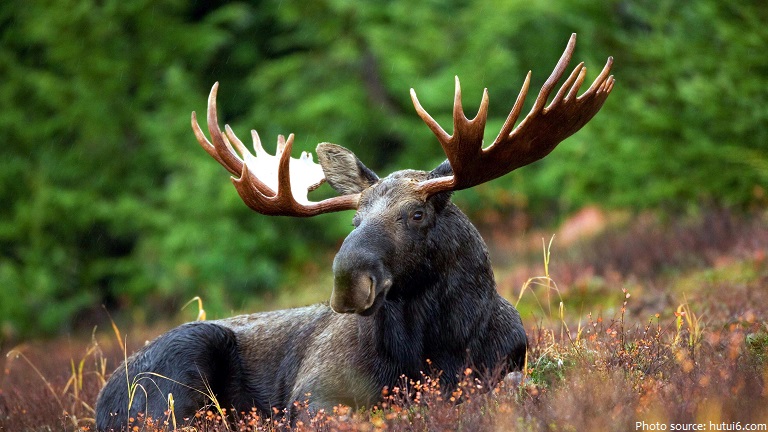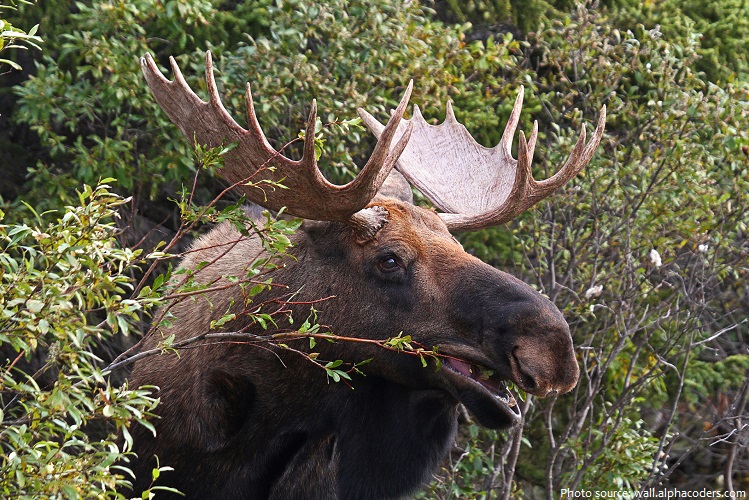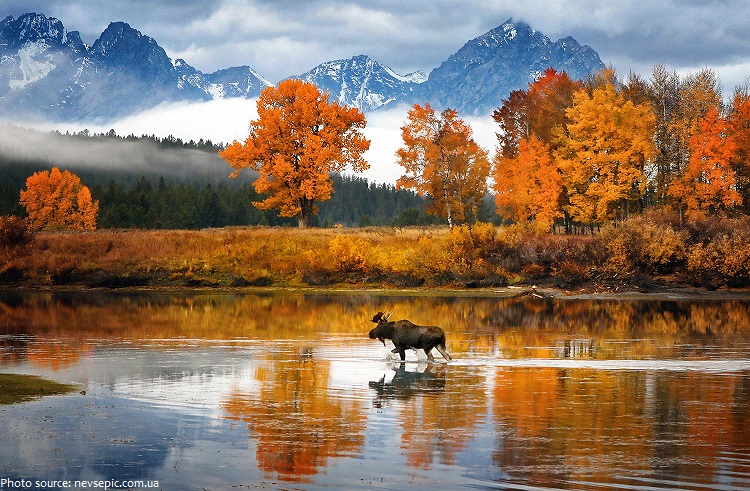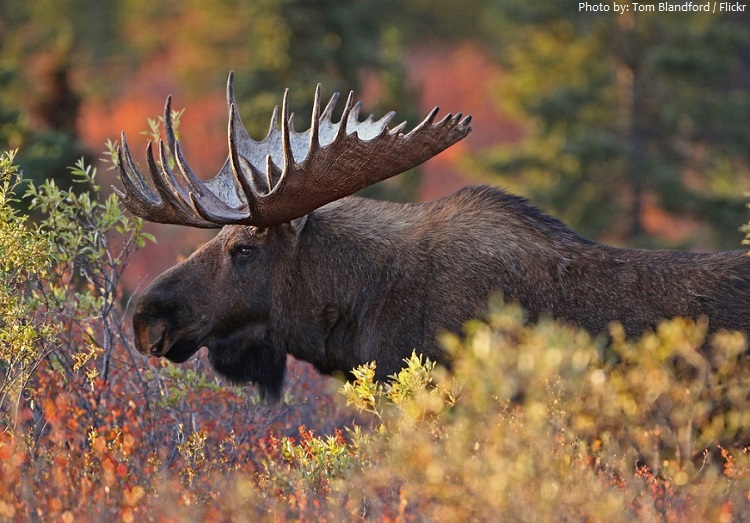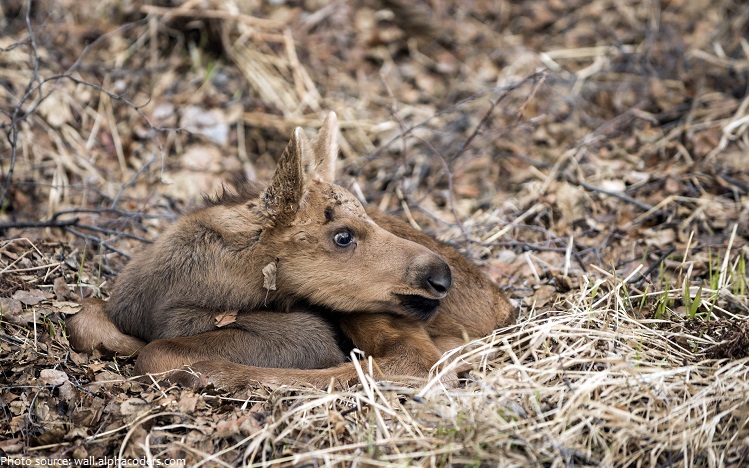The moose is the largest species in the deer family.
Moose live in the northern regions of North America, Europe and Asia. Currently, most moose are found in Canada, Alaska, New England, Scandinavia, Latvia, Estonia and Russia.
Their habitats include boreal and mixed-deciduous forests in temperate and sub-arctic climates.
The lifespan of a moose is about 15–25 years.
On average, an adult moose stands 1.4–2.1 meters (4.6–6.9 feet) high at the shoulder. Males normally weigh from 380 to 700 kilograms (838 to 1,543 pounds) and females typically weigh 200 to 490 kilograms (441 to 1,080 pounds). The head-and-body length is 2.4–3.1 meters (7.9–10.2 ft), with the vestigial tail adding only a further 5–12 centimeters (2.0–4.7 inches).
Moose have long faces and muzzles that dangle over their chins.
Most moose have a pendant of fur-covered skin, about 30 centimeters (12 inches) long, called a bell, hanging from the throat.
Their fur is generally brown or black and provides excellent insulation from the cold.
Moose hair is hollow, which helps keep it warm.
The male moose have antlers like other members of the deer family. These can grow up to 1.8 meters (5.9 feet) wide from tip to tip.
Bull moose use dominant displays of antlers to discourage competition and will spar or fight rivals. After the mating season males drop their antlers to conserve energy for the winter. A new set of antlers will then regrow in the spring.
The moose is a herbivore and is capable of consuming many types of plant or fruit.
Moose are not grazing animals but browsers (concentrate selectors).
Moose have four-chambered stomachs, as do cows. They regurgitate partially digested food and “chew their cud”. Food is fermented in the first chamber, and nutrients are extracted in the next three.
Unlike most hooved, domesticated animals, moose cannot digest hay, and feeding it to a moose can be fatal. The moose’s varied and complex diet is typically expensive for humans to provide, and free-range moose require a lot of forested acreage for sustainable survival, which is one of the main reasons moose have never been widely domesticated.
Moose are excellent swimmers and are known to wade into water to eat aquatic plants both at and below the surface.
Moose are at home in the water despite their staggering bulk. They have been seen paddling several miles at a time, and will even submerge completely, staying under for 30 seconds or more.
They can run up to 56 kilometers (35 miles) an hour over short distances, and trot steadily at 32 kilometers (20 miles) an hour.
The hump on a moose back is actually caused by massive shoulder muscles.
Their front legs are longer than their back legs, making it easier for them to jump over things lying in its path.
A moose’s wide hooves act like built-in snowshoes, helping the moose walk in the snow.
Moose have poor eyesight, but they have excellent sense of hearing and smell.
Moose are mostly diurnal animals.
Unlike most other deer species, moose are solitary animals and do not form herds.
Mating occurs in September and October. The males are polygamous and will seek several females to breed with.
After a gestation period of 8 months, females give birth to one baby (twins are rare), which is called a calf. These calves grow quickly and can outrun a person by the time they are just five days old. The young will stay with the mother until just before the next young are born.
A full-grown moose has few enemies except Siberian tigers which regularly prey on adult moose, but a pack of gray wolves can still pose a threat, especially to females with calves. Bears are also known to prey on moose of various sizes and are the only predator besides the wolf to attack moose both in Eurasia and North America.
The moose, along with the beaver, is one of the national animals of Canada. It is also considered the national animal of Sweden and Norway. In Norway it is often referred to as ‘the king of the forest’. The moose is the state animal of Alaska and Maine.
In Europe the moose is known as the elk.
European rock drawings and cave paintings reveal that moose have been hunted since the Stone Age.
Moose are hunted as a game species in many of the countries where they are found.
Moose are not currently threatened, despite being hunted.
Moose are not usually aggressive towards humans, but can be provoked or frightened to behave with aggression. In terms of raw numbers, they attack more people than bears and wolves combined, but usually with only minor consequences. In the Americas, moose injure more people than any other wild mammal, and worldwide, only hippopotamuses injure more.

